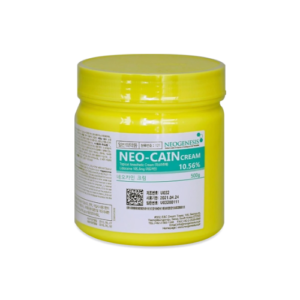Daihan Lidocaine HCl 2%
$15
Daihan Lidocaine HCl 2% is rapidly and completely absorbed following parenteral administration. Absorption rates vary depending on the administration site and the presence of a vasoconstrictor agent. Blood levels peak highest following intercostal nerve block and lowest after subcutaneous administration. Lidocaine HCl binds to plasma proteins in a concentration-dependent manner, with 60-80% bound at concentrations of 1 to 4 mcg/mL.
Description
Daihan Lidocaine HCl 2% is rapidly and completely absorbed following parenteral administration. Absorption rates vary depending on the administration site and the presence of a vasoconstrictor agent. Blood levels peak highest following intercostal nerve block and lowest after subcutaneous administration. Daihan Lidocaine HCl binds to plasma proteins in a concentration-dependent manner, with 60-80% bound at concentrations of 1 to 4 mcg/mL.
Indications and Usage:
Daihan Lidocaine HCl 2% is indicated for local or regional anesthesia using infiltration techniques such as percutaneous injection. It is also suitable for intravenous regional anesthesia through peripheral nerve block techniques (e.g., brachial plexus, intercostal) and central neural techniques (e.g., lumbar, caudal epidural blocks), following standard procedures.
Contraindications:
Patients with known hypersensitivity to amide-type local anesthetics should not use Lidocaine HCl 2%.
Warnings:
Clinicians experienced in diagnosing and managing dose-related toxicity and acute emergencies associated with the chosen block should administer Lidocaine Hydrochloride Injection. Immediate availability of oxygen, resuscitative drugs, cardiopulmonary equipment, and trained personnel is essential. Delay in managing dose-related toxicity, underventilation, or altered sensitivity may lead to acidosis, cardiac arrest, and potentially fatal outcomes.
Pregnancy:
- Pregnancy: Animal studies have not shown harm to the fetus at doses up to 6.6 times the human dose. However, well-controlled studies in pregnant women are lacking.
Overdosage:
Acute emergencies related to local anesthetics often result from high plasma levels or unintended subarachnoid injection. Management includes careful monitoring, maintaining a patent airway, and providing assisted or controlled ventilation with oxygen. If convulsions persist, administer small increments of an ultra-short-acting barbiturate or benzodiazepine intravenously. Supportive treatment for circulatory depression may require intravenous fluids and vasopressors.
Dosage and Administration:
- Use the lowest concentration and dose necessary for the desired effect. Adjust dosages for children, the elderly, and patients with cardiac or liver disease.
- For intravenous regional anesthesia, use only the 50 mL single-dose vial containing 0.5% Lidocaine Hydrochloride Injection, USP.
Maximum Recommended Dosages:
- Adults: Without epinephrine, the maximum dose is 4.5 mg/kg (300 mg total). With epinephrine, the maximum dose is 7 mg/kg (500 mg total). For continuous epidural or caudal anesthesia, do not administer the maximum dose at intervals of less than 90 minutes.
- Intravenous Regional Anesthesia: Do not exceed 4 mg/kg in adults.
Special Considerations (Mixing with Fillers):
-
- Calcium Hydroxyapatite fillers: Mix CaHA with lidocaine at a concentration of 0.3% for patient comfort during injection. Adjust dilutions based on skin thickness and tissue laxity. Mix the suspension well.
- For HA-based fillers, mix 2% lidocaine with HA filler + saline solution to achieve a final concentration of 0.3% if pain relief is desired. Mix the suspension well.
Additional information
| Weight | 0.56 kg |
|---|




